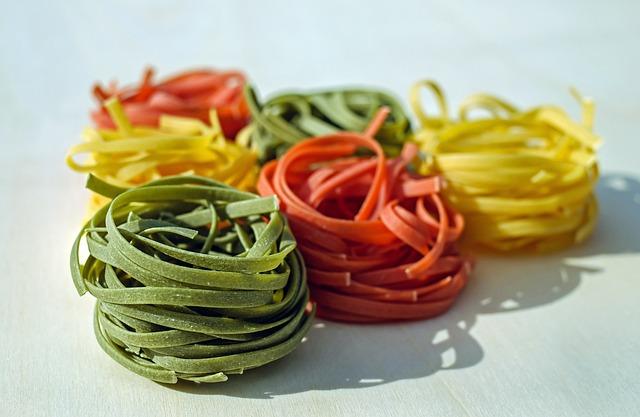When it comes to our furry companions, ensuring their health and happiness is always a top priority. As more pet owners explore alternative diets, raw feeding for dogs has become a topic of growing interest and curiosity. This feeding approach, often characterized by uncooked meats, bones, and fresh vegetables, promises a more natural and biologically appropriate diet for our canine friends. However, with its rise in popularity comes an array of questions and concerns about its safety and nutritional adequacy. In this article, we will delve into the principles of raw feeding, examine the potential benefits and risks, and provide guidance on how to make informed decisions that best suit your dog’s needs. Whether you’re a seasoned raw feeder or simply exploring new dietary options for your pet, this guide aims to equip you with the knowledge to ensure your dog’s diet is both safe and nourishing.
Understanding the Basics of Raw Feeding for Dogs
When considering a shift to raw feeding, it’s essential to grasp the fundamentals to ensure your dog’s health and well-being. At its core, raw feeding involves providing your canine companion with a diet that closely resembles what their ancestors would have eaten in the wild. This typically includes a variety of uncooked meats, bones, fruits, and vegetables. To maintain a balanced diet, it’s important to include a variety of ingredients, each offering unique nutrients.
- Proteins: Choose lean meats like chicken, beef, or turkey, ensuring they are fresh and high-quality.
- Bones: Incorporate raw, meaty bones to help with dental health and provide essential minerals.
- Fruits and Vegetables: Include dog-safe options such as carrots, apples, and spinach to add fiber and vitamins.
- Supplements: Consider adding omega-3 fatty acids or vitamin supplements if needed, but always consult with a vet first.
Transitioning to raw feeding requires careful planning and a commitment to understanding your dog’s nutritional needs. By doing so, you can create a meal plan that not only satisfies their appetite but also supports their overall health.

Nutritional Benefits and Risks of a Raw Diet
Feeding your dog a raw diet can offer a range of nutritional benefits. Advocates of raw feeding often highlight the diet’s potential to provide more natural and unprocessed nutrients, which may contribute to healthier skin, shinier coats, and improved dental health. Additionally, some dog owners report increased energy levels and better digestion in their pets. A raw diet typically includes a variety of components such as:
- Raw meat (muscle and organ meats)
- Bone (whole or ground)
- Fresh fruits and vegetables
- Eggs
- Dairy products like yogurt
However, it’s important to be aware of the risks associated with a raw diet. Raw meat can harbor harmful bacteria such as Salmonella and E. coli, which pose risks not only to your dog but also to humans in the household. Furthermore, an improperly balanced raw diet may lead to nutritional deficiencies or excesses, potentially impacting your dog’s health in the long term. Therefore, it’s crucial to consult with a veterinarian or a pet nutritionist to ensure the diet is well-balanced and safe.

Preparing a Balanced Raw Meal for Your Canine Companion
Crafting a nutritionally complete raw meal for your beloved dog is an art that balances proteins, fats, and essential vitamins. Begin by selecting high-quality proteins such as beef, chicken, or turkey. Incorporate organ meats like liver and kidney, which are nutrient powerhouses, providing vital vitamins and minerals. Don’t forget to add a healthy dose of fats, essential for a shiny coat and energy; options like fish oil or coconut oil work wonders.
- Meat and Organ Meats: Aim for 70-80% of the meal.
- Bone: Ensure 10-15% to provide necessary calcium.
- Vegetables: Add 5-10% for fiber and vitamins; think leafy greens and carrots.
- Supplements: Consider adding probiotics, omega-3, and a multivitamin to cover all bases.
Remember, variety is key to a balanced diet. Rotate the protein sources and occasionally introduce new vegetables to keep meals exciting and nutritionally diverse. Always monitor your dog’s health and energy levels, adjusting the meal plan as needed to suit their unique requirements.

Ensuring Safe Handling and Storage of Raw Dog Food
Proper handling and storage of raw dog food are crucial to ensuring the health and safety of both your pet and household. Begin by purchasing from reputable suppliers that guarantee the quality and safety of their products. Once you have the food, immediate refrigeration is key. Raw dog food should be stored in the refrigerator at temperatures below 40°F (4°C) and used within a few days to maintain freshness. For longer storage, keep it in the freezer at 0°F (-18°C) and thaw in the fridge when needed.
During meal prep, always wash your hands and sanitize surfaces before and after handling raw food. This helps to prevent any cross-contamination. Consider these additional practices for safe handling:
- Use dedicated utensils and cutting boards for raw dog food.
- Store raw food in airtight containers to prevent leaks and contamination.
- Regularly clean your dog’s feeding area with pet-safe disinfectants.
By following these steps, you create a safe environment for raw feeding, ensuring that your furry friend enjoys the benefits of a raw diet without the associated risks.

